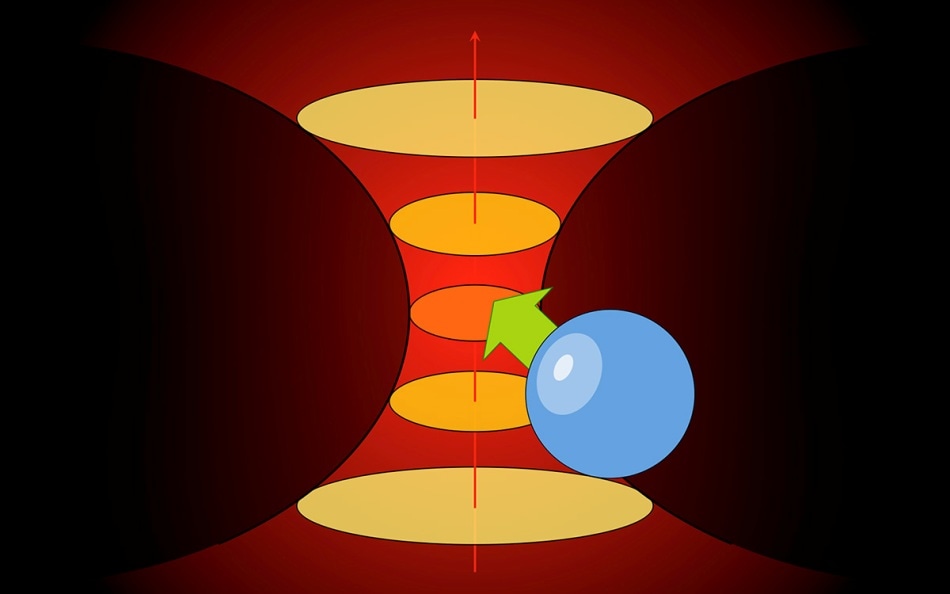 By Megan DaviesJun 19 2019
By Megan DaviesJun 19 2019Whenever optical tweezers are used for examining biological cells, they often cause damage to the cell which represents a major problem.
 Illustration of an optical tweezer (Image credit: Giovanni Volpe)
Illustration of an optical tweezer (Image credit: Giovanni Volpe)
Giovanni Volpe from the University of Gothenburg has now identified a new kind of force that will considerably decrease the amount of light utilized by optical tweezers and enhance the analyses of all types of particles and cells.
“We call it ‘intra-cavity feedback force’. The basic idea is that, depending on where the particle or cell you want to study is, the amount of laser light used to trap it changes automatically. Whenever the particle is in focus, the laser switches off. When the particle tries to escape, the laser switches on again.”
Giovanny Volpe, Senior Lecturer, Department of Physics, University of Gothenburg
An optical tweezer, in essence, is a focused laser beam that is capable of trapping particles. Earlier, two varied types of forces emerging from this type of tool have been detected— gradient force, meaning the particle goes against the laser intensity, and scattering force in which the particle is forced towards the laser.
Along with his team, Giovanni Volpe has identified a third kind of force in this realm, and also a novel method for fabricating optical tweezers. Such innovations are set to considerably enhance the analysis of single biological cells.
With this method, as much as 100 times less light is needed, in some cases, compared to using a traditional optical tweezer. With less light, you cause less photo damage to the cell you are studying.
Giovanny Volpe, Senior Lecturer, Department of Physics, University of Gothenburg
This could prove handy for examining any type of cell that is often suspended in a solution—for instance, a yeast cell or a blood cell—that a scientist may prefer to analyze over an extended period of time.
One of the main issues when using optical tweezers is that the light raises the temperature of the cell, which is damaging. A rise of 10 degrees might not be tolerable, but the rise of 0,1 degrees might be fine. So using less light, and therefore limiting the rise in temperature, could make a huge difference. Experiments could be done in a more realistic manner in relation to the cell’s natural life cycle.
Giovanny Volpe, Senior Lecturer, Department of Physics, University of Gothenburg
The findings have been reported in Nature Communications.